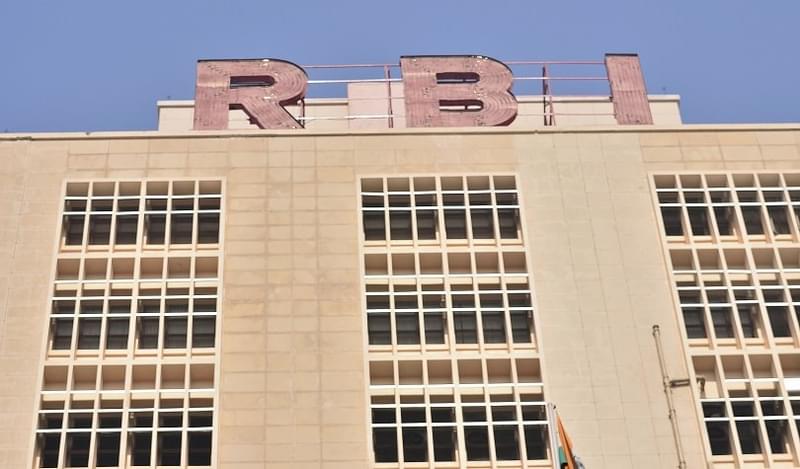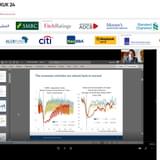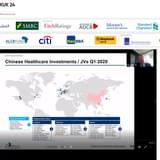The Indian government on Sunday announced that it was well on its way in bringing vast volumes of hidden cash in from the shadows. The economy received an injection of INR3tn (US$44bn), just a few days after the state forced its population to replace all 500 and 1000 rupee notes with new versions.
Experts estimate the ban affected up to 86% of all notes in circulation, worth around US$223bn.
With no warning given, the currency ban forced millions of people across India to flock to the banks and ATMs in order to exchange their old notes for new 500 and 2,000 rupee bills.
The machines began running out of cash, even as the government, pressed by popular anger, loosened withdrawal limits and extended period given to exchange old notes to November 24.
The shock move was part of Modi’s campaign to crack down on corruption, intended to help bring into the market billions of dollars of untaxed or illegally acquired cash. India’s “black money” is thought to represent somewhere between 30% and 75% of the GDP.
While the motive behind the demonetization seems reasonable, and has received strong support from India’s middle class, execution has been questionable and the consequences unpredictable.
Some problems have been purely technical, as banks were hit with overwhelming, perhaps unrealistic, demand for hard cash. Worse still, some of the new notes were reportedly the wrong size for existing ATMs, meaning that many cash machines had to be upgraded swiftly.
Besides, vast chunks of India’s population have never dealt with banks before and never had a bank account, with 80% of transactions in rural areas being conducted in cash; this created additional red tape and further slowed the process.
On Tuesday, Modi’s decision was challenged by India’s Supreme Court, which questioned the government’s policy and demanded an explanation as to why it chose to inconvenience millions of citizens.
“We will not interfere, as these are economic policies of the government. However, we look into ways to mitigate the sufferings of the common man,” said a panel of judges, adding that the tactic deployed by the government was more akin to “carpet bombing” than so-called “surgical strikes.”
Crucially, it is unclear how effective the currency ban will be in attracting cash reserves from “under the carpets,” with observers pointing out numerous loopholes that the government failed to close.
One example is digital currencies like Bitcoin, which is garnering renewed interest as of late; online searches for Bitcoin originating in India have risen 30% since Sunday. Last week, one Bitcoin was trading at US$817, a market premium of about 15% - compared to just 3% in September.
Growth Challenged
With villages being hit particularly hard, many people had to resort to bartering with farmers and merchants, while some have been forced to carry around bags of coins. According to a report by Fitch’s India Ratings & Research, the farming industry will be one of the most impacted.
“A sudden demonetisation will adversely impact this segment of the economy and it will witness immediate contraction, though the impact will diminish over time,” the agency’s report stated.
Modi’s “shock therapy,” predictably, slowed economic activity in other sectors, including consumer spending (particularly on premium goods), trade and real-estate, with construction halting on many projects.
“The sudden decline in the money supply and simultaneous increase in bank deposits is going to adversely impact consumption demand in the economy in the short term,” the report continued. “This coupled with the adverse impact on real estate/construction and informal sectors may lead to lowering of GDP growth.”
India’s GDP has been one of the fastest growing in recent years among big world economies, although a UBS report this week suggested that if cash flow interruption caused by the replacement of large-denomination notes continues for another three weeks, it could shave off as much as 1.2% from the current 7% being forecast.
Consumer inflation and CPI stood at a 14-month low at 4.2% and 3.39% in October, respectively, and a reduction in the money supply will likely add further downward pressure, although deflation and a drop in demand will vary across different sectors.
This gave the Monetary Policy Committee some wiggle room as it cut benchmark rates further by 0.25% to 6.25%. A source speaking with Bonds & Loans expects policymakers to maintain rates at the RBI’s meeting next month.
The injection of cash into the economy will provide additional liquidity to the banking sector, but the excess will be “sterilised” by the RBI in order to keep short term rates aligned with the benchmark.
According to Joiel Akilan, Executive Director & Chief Representative for BBVA in India, that bodes well for the rupee, which will mostly be affected by global factors than domestic. The additional deposits will also boost the banks.
“The banking sector has been flushed with liquidity due to the demonetisation and billions of dollars have comeback as bank deposits,” said Akilan. “This will help the banking sector which was struggling with bad assets to have enough liquidity thus driving down the lending rates to make loans cheaper.”
Issuers to Benefit
Fitch expects bond markets to be boosted by the surge in deposits: “It will create more demand for government bonds and other high rated bonds in a situation of tepid demand for credit, leading to lower bond yields especially in the shorter end of the curve.”
Yields on sovereign 10-year notes have been declining, with a 19bp drop seen on Tuesday and further 11bp drop on Wednesday. In fact, Indian government bonds, down 38bp since the start of the month, have been the exception among a growing group of EM sovereign credits sold off in the wake of the US presidential election outcome.
This trend was slightly undermined by some outflows of foreign investment, as a result of continued easing. Overseas holdings of rupee-denominated government and corporate notes fell by INR69.9bn (US$1.03bn) on Wednesday, the most in single-day, according to Bloomberg.
Overall, the outflow of foreign capital reached US$902.9mn this month, but the bullish local bond market is expected to compensate for that.
“The recent crackdown on unaccounted money by demonetisation of currency notes will bring a lot of funds to the banking system which will lead to decline in interest rates and lower inflation will make the local currency bonds attractive,” noted Akilan.
Looking at the fundamentals, it appears that the macroeconomic picture for India is bright enough to allow Modi some leeway in terms of managing short-term complications that will help cleanse the economy and reduce corruption in the long-run.
Having taken a big gamble, Modi will now need to follow through and deliver tangible gains to compensate for pain and struggle that it is causing now.
“At an aggregate level, this move will significantly eliminate the existing stock of black money/fake currency and will benefit the economy in the medium to long-run, but how the creation of black money in the future will be prevented still remains unanswered,” concluded the Fitch report’s authors.









